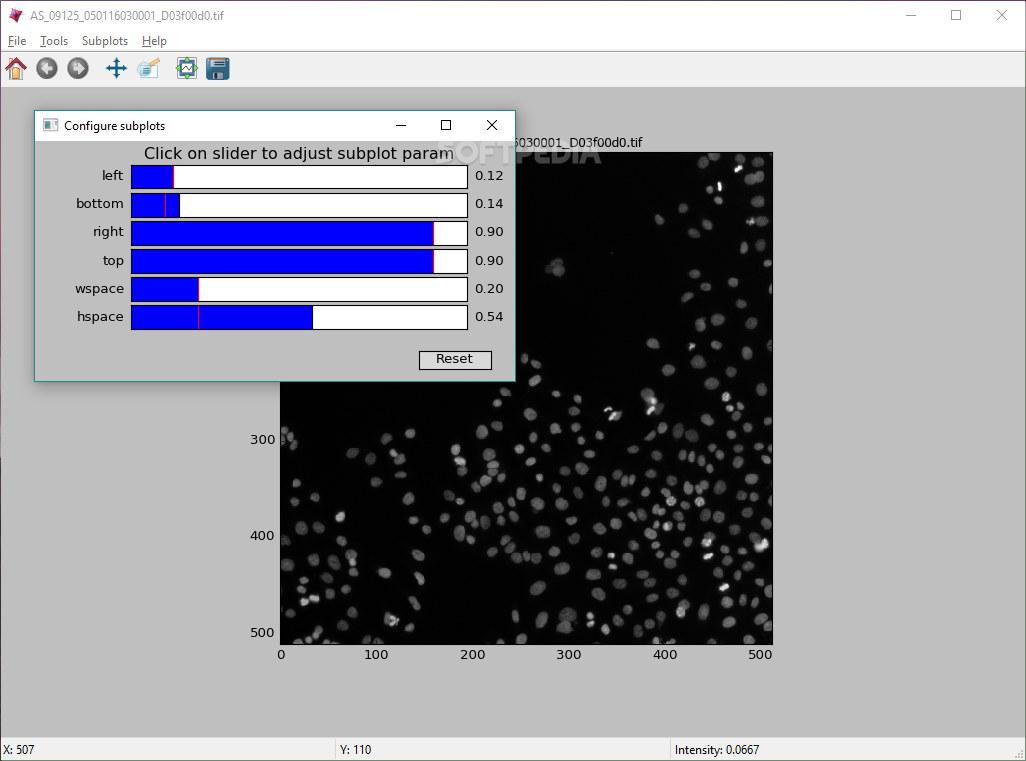

Assertionerror cellprofiler threeshold manual#
In addition to being time-consuming and tedious, manual colony scoring may suffer from inaccuracy and irreproducibility. However, adapting this assay to quantitative high-throughput applications has proven challenging, as it requires extensive scoring of colony phenotypes by eye. This red/white colony color assay has been widely used over the last few decades for the investigation of many biological processes, such as recombination, copy number, chromosome loss, plasmid stability, prion propagation, or epigenetic gene regulation in both budding and fission yeasts. When grown under adenine-limiting conditions, adenine auxotrophs grow but accumulate a cell-limited red pigment in their vacuoles, whereas wild-type cells grow white. For example, yeasts with mutations in the adenine biosynthetic pathway cannot grow on media lacking adenine. Ultimately, your goal is to try to identify why the thresholding method is failing.Auxotrophy is the inability of an organism to synthesize a particular organic compound required for its growth.What intensity value is selected as the threshold? Similarly, for images where the thresholding isn’t working well, what intensity value is selected? Is it too low or too high? Inspect images where the thresholding method works well.Here are a couple thoughts regarding thresholding errors and how I would approach the threshold method working well for some images but not others: A great resource for thinking about optimizing image analysis workflows is this article: When To Say ‘Good Enough’ | Carpenter-Singh Lab Hi problem you’ve described is very common and a challenge for most imaging sets. In general, for this type of image (bright spots on dark background), I think you’ve already selected the best method for thresholding (RobustBackground)īy my eye, I thought that dropping your size threshold to 2-8 pixels improved the speckle detection, but you know better than I do what should be considered a speckle.Are some speckles detected but their borders are wrong? You may need to change your thresholding by adjusting the # of deviations that are added to your average to compute the threshold (try 1 for less stringency or 3 for more stringency). Are small speckles missed? You may need to lower your size cutoff range (try 3-8 or even 2-8). If you compare the original image to the enhanced image, are the right features being enhanced? Are all speckles brightened? Your current settings of Speckle Feature size of 8 look reasonable to me, but you may want to adjust this to see if you prefer the results your speckle enhancement using EnhanceOrSuppressFeatures.Finally, I found that switching to an object size of 60 - 300 reduced the amount of oversegmentation (splitting of one cell into two cells)Įxample to evaluate the speckles, here’s what I would look at:.The borders between your cells are distinguished mostly by intensity dropping at the edges, so I would switch to the “Intensity” method for distinguishing clumped objects and drawing dividing lines between clumped objects.I tried out Otsu two-class thresholding w/ the option to log transform prior to thresholding and it worked well RobustBackground is probably not the best thresholding option for your images, since it works best on very sparsely dispersed bright objects against a mostly dark background (like your speckles).To simplify things, I would switch your input image for IdentifyPrimaryObjects to the original image Rather than performing an enhancement prior to detecting your cells, I think you can get quite a good segmentation using the original image.Hi your cell segmentation, I would recommend the following: This is what I currently get, There should about 44 cells in this image. I thought Robust would work better but Imnot sure if it’s the best one for counting cells. Please let me know if you think I should be using a different thresholding method. I have used 80 in the past and that seemed to have worked a little bit better however the “?” help button does say “enter the diameter of the largest speckle” so I’m a little bit confused on how I could optimize this value.Ģ0210122_FITC_07.tif (8.0 MB) 20210122_FITC_08.tif (8.0 MB)

I first use the “EnhanceorSuppressFeatures” before I apply the “IdentifyPrimaryObjects” and where it says “feature size” I entered 150 (my largest cell is roughly about 150 pixels in diameter). I am currently having issues getting CellProfiler to accurately count the number of cells in each image. I have put together a pipeline that counts cells in an image and counts the number of green fluorescent punctae as well.


 0 kommentar(er)
0 kommentar(er)
